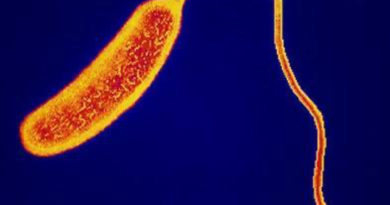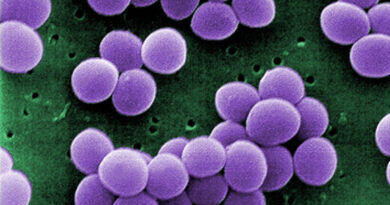Salmonella – Morphology. Cultural Characteristics, Prophylaxis, Treatment
Salmonella genus consist of bacilli those live as parasite in the intestine of a large number of vertebrate species and produce infection in human beings. which lead to enteric fever, gastroenteritis, septicemia with or without focal suppuration and the carrier state.
Salmonella typhoid, is the most important member of the genus. Which is the causative agent of typhoid fever.
There are more then 2000 serotypes or species included in salmonellae genus. For practical purposes, they may be divided into two groups: (1) the enteric fever group which consisting of typhoid and paratyphoid bacilli that are exclusively or primarily human parasites; and (2) the food poisoning group, this group consist of bacilli those are essentially animal parasites but can also infect human beings, producing gastroenteritis, septicemia or localised infections.
Morphology
Salmonellae are Gram negative rods, about 1 – 3 X 0.5 micrometer in size. They are motile by peritrichate flagella, exception is S. gallinarum-pullorum, which is always nonmotile. Salmonellae do not produce capsules or spores but may possess fimbriae.
Cultural Characteristics
Salmonellae are called aerobic and facultatively anaerobic, these grow readily on simple media over a range of pH 6 -8 and temperature 15 – 41 C (optimum 37 C).
On artificial media, salmonella produce large colonies, 2 – 3 mm in diameter, circular, low convex and smooth.
Due to the absence of lactose fermentation, its colonies are colorless on MacConkey and deoxycholate citrate media. On Wilson’s and Blair bismuth sulphide medium, jet black colonies with a metallic sheen are formed due to production of H2S. S, paratyphi A and other species that do not produce H2S produce green colonies.
Biochemical Reactions
Salmonellae ferment glucose, mannitol and maltose, forming acid and gas. An important exception is S. typhi which is anaerogenic.
Lactose, sucrose and salicin are not fermented. Indole is not produced. They are MR positive, VP negative and citrate positive.
S. typhi and a few other salmonellae do not grow in Simmons’ citrate medium as they need tryptophan as the growth factors. Urea is not hydrolysed. H2S is produced, except by S. paratyphi A, and some other species.
The enteric fever group may be separated biochemically.

Resistance
Salmonella bacilli are killed at 55 C in one hour or at 60 C in 15 minutes. Boiling or chlorination of water and pasteurization of milk destroy the bacilli.
In polluted water and soil, they can survive for weeks and in ice for months. Salmonella’s cultures may be viable for years if prevented from drying. They can be killed within five minutes by mercuric chloride (1:500) or 5% phenol.
Prophylaxis
Typhoid fever can be effectively controlled by general measures, such as improvements in sanitation and provision of protected water supply.
Specific prophylaxis with heat killed typhoid bacillus vaccine was developed and successfully field tested by Almroth Wright during the Boer war in South Africa. The TAB vaccine which came into general use later contained S. typhi, 1000 million and S. paratyphi A and B, 750 million each per ml killed by heating at 50 -60 C and preserved in 0.5% phenol.
The vaccine is given in two doses of 0.5 ml subcutaneously at an interval of 4 -6 weeks. Local and general reactions lasting for one or two days are quite frequent. Such reactions may be avoided if the vaccine is administered in a dose of 0.1 ml intradermally. In non endemic areas, vaccination is recommended for troops, medical and paramedical personnel.
Treatment
Specific antibacterial therapy for enteric fever became available only in 1948 with the introduction of choramphenicol, which continued as the sheet anchor against the disease till the 1970 when resistance became common.
S. typhi is susceptible in vitro to many antibiotics such as streptomycin and tetracycline, these are ineffective in vivi. Ampicillin, amoxicillin, furazolidone, and cotrimoxazole were the other drugs that had been found useful in the treatment of typhoid fever.
A combination of antibacterial therapy along with the vaccine has been tried in the eradication of carrier state. This combination has also been used to prevent relapses.
Reference: Text Book Of Microbiology



